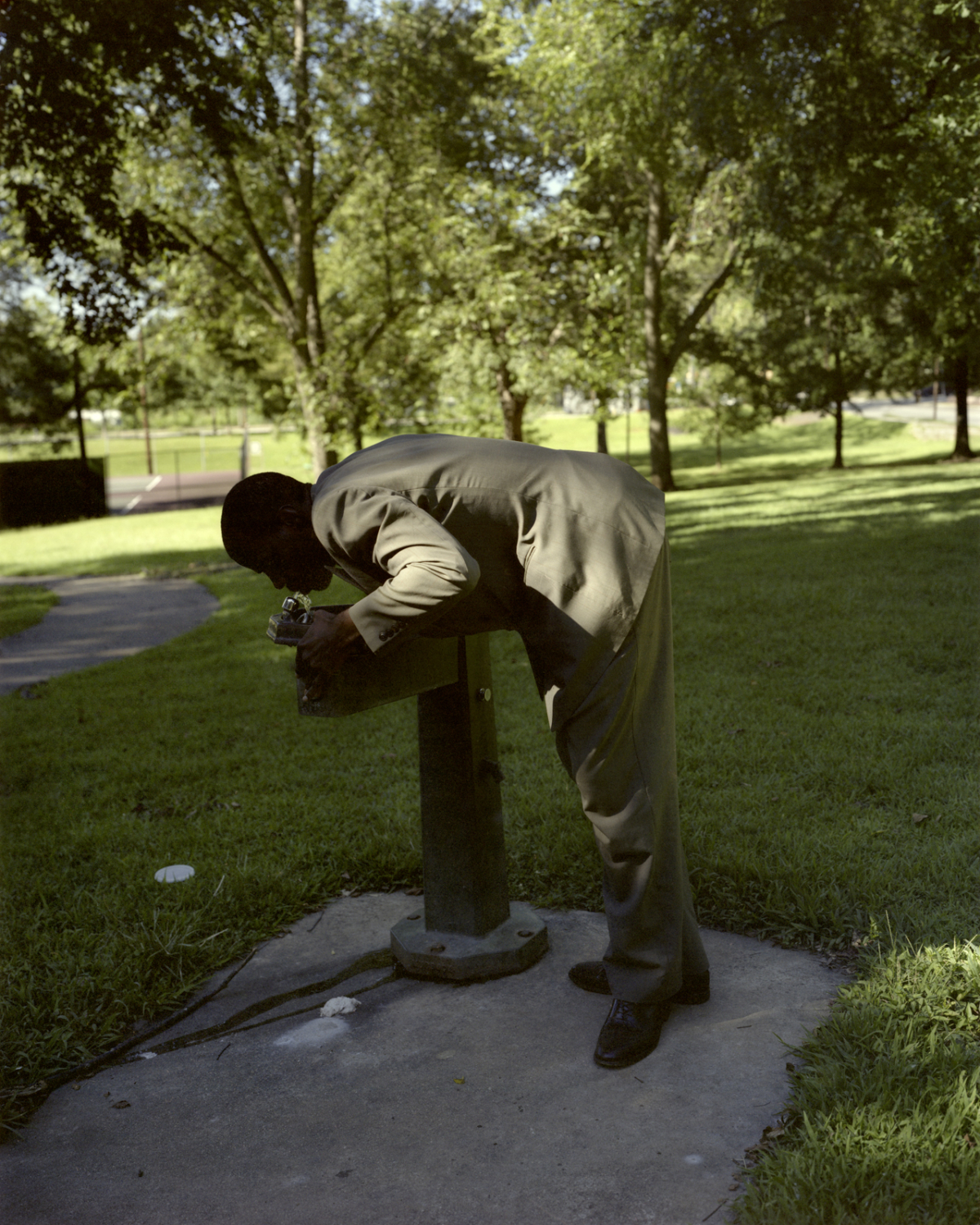Artist Blog
Every week an artist whose single image was published by Der Greif is given a platform in which to blog about contemporary photography.
Archetypes, symbols and the relevance of history
Nov 22, 2018 - Alex Christopher Williams
I wanted to take this opportunity to transcribe some of the lectures I’ve given recently to talk about some of my photographs that I believe are pivotal to my growth as an artist and artistic practice.
This is the first photograph I made for my recent body of work titled Black, Like Paul. In many ways this picture was a stroke of good luck because it would begin to shape a manifesto I would later create for this work; to make work about family by photographing men in my father’s likeness. This photograph evolved and matured as I would through graduate school as I began to think about American history and the role of fiction in photography.
I made this picture after an interaction I had with a man in the park in Atlanta, Georgia. He told me about why he wore a suit and how it demanded respect from others even though he worked in the construction industry. It was important for him to be a role model for his sons and to teach them to carry them self with dignity and respect. I thought of him as an archetype for the perfect father figure and would end up photographing him in this statue-like pose. The contrasting light and the dark shadow that obscures his identity would help emphasize the archetypal quality I saw in him.
It wasn’t until after receiving the negatives that I would fully realize the total implications of a photograph like this. In the 19th and 20th century, southern states in America had Jim Crow laws that deemed black people to be separate but equal and the results from these types of laws would help foster the rampant racism left over from the American Civil war. Water fountains are one of the icons of segregation that would be designated to whites and blacks. Of course, history would show many civil rights movements, and leaders would come from Atlanta to end this era of government-sanctioned racist laws.
I was interested in how the symbol of a water fountain, many years later, could still carry remnants of the past in my photograph. I was also interested in how this photograph transcended the identity of the man pictured to be, not of himself, but to be of any man who struggled America’s mistreatment of its peoples.


